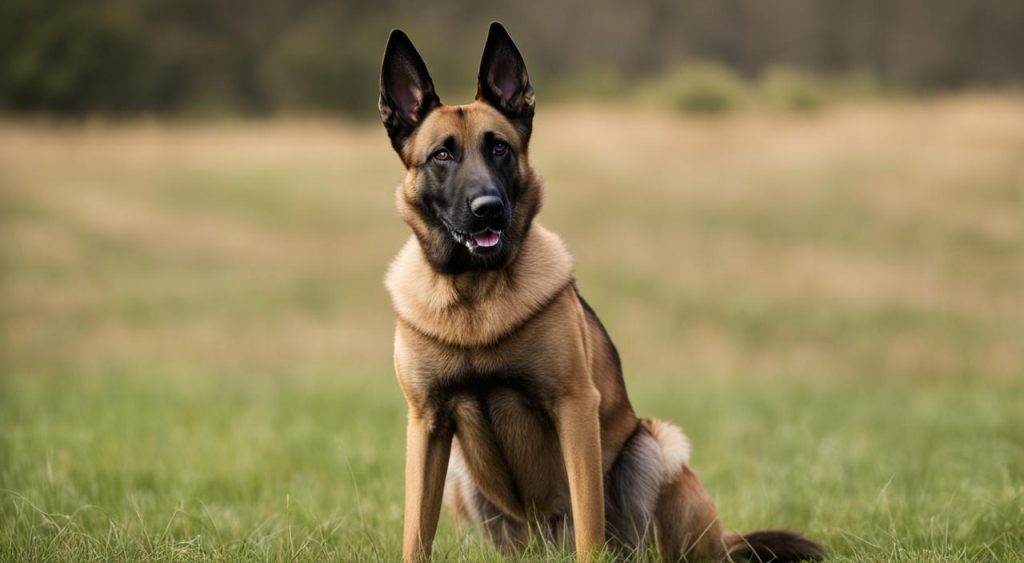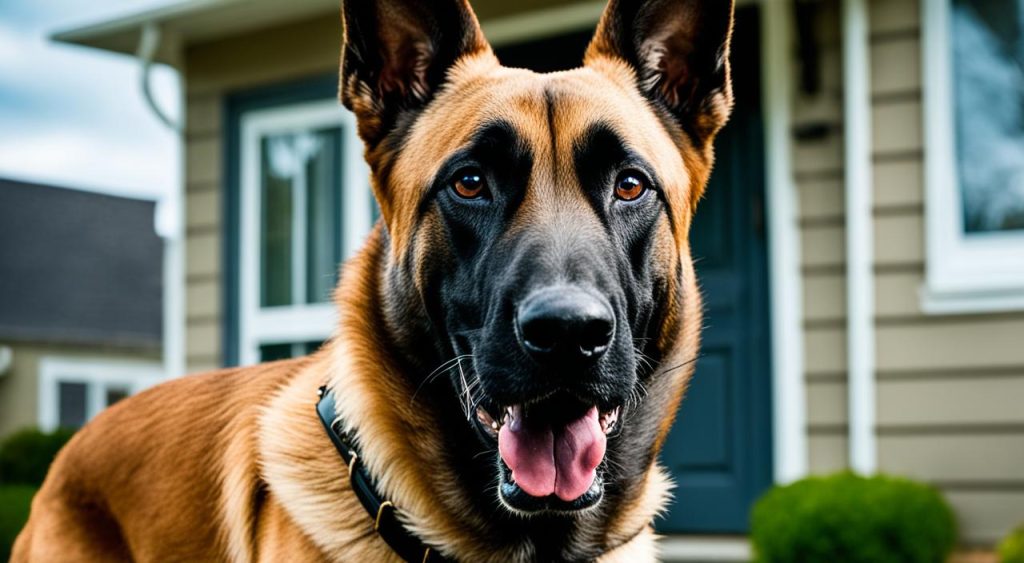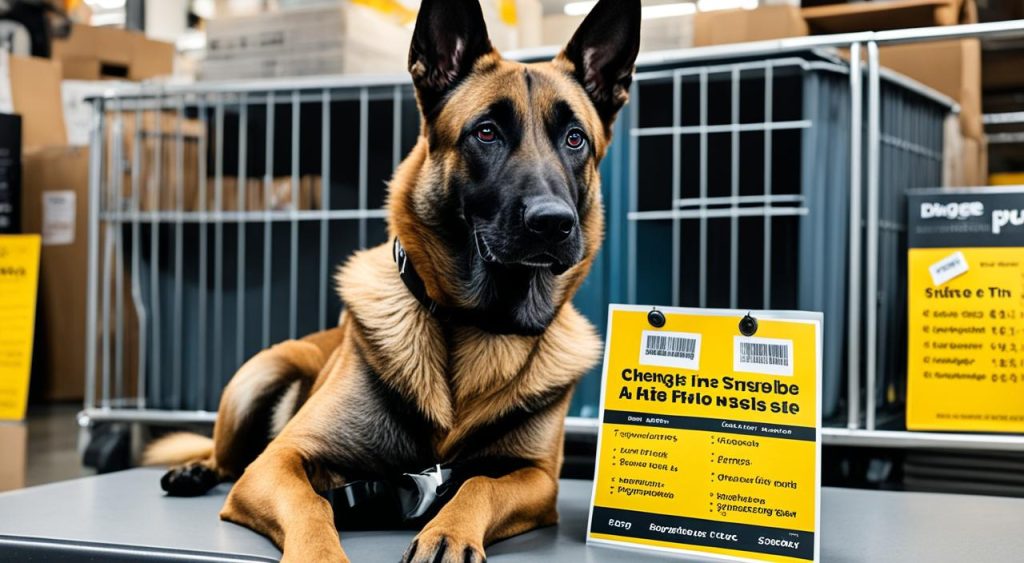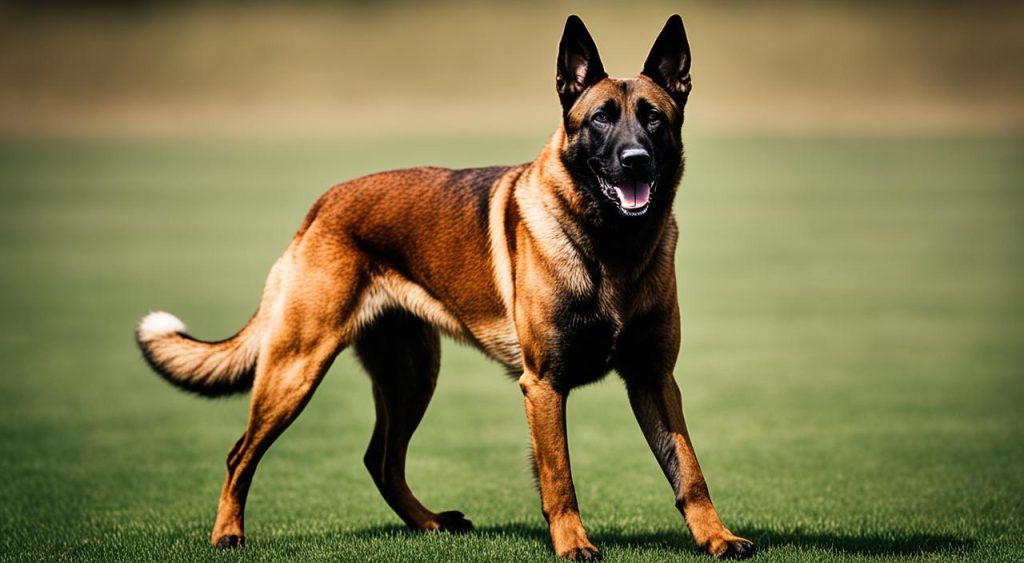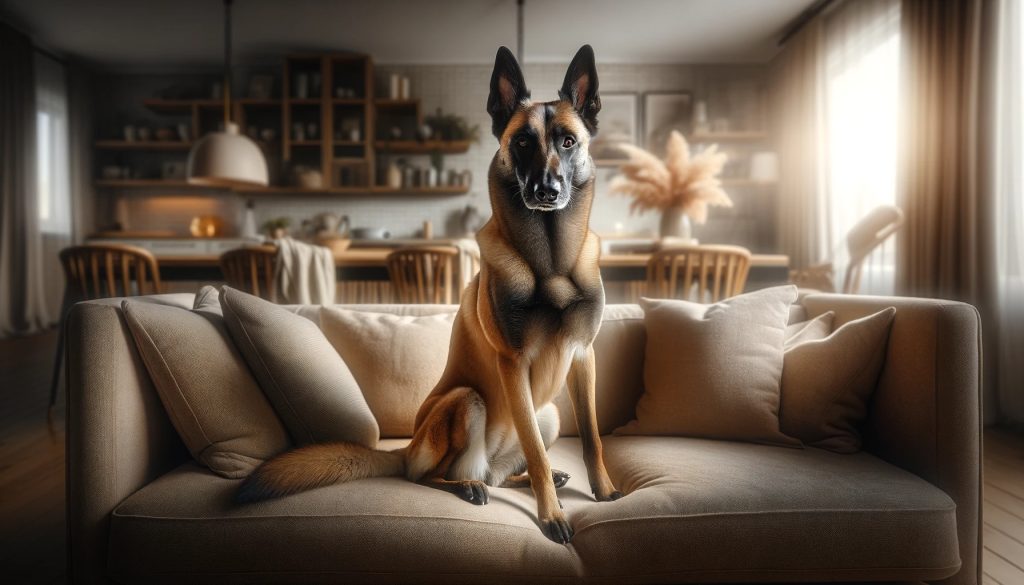Belgian Malinois dogs have been the subject of debate regarding their aggression levels. While they are known for their protective nature and high energy, it is important to understand that aggression in dogs is not solely determined by breed, but rather by factors such as individual temperament, training, socialization, and owner responsibility.
Key Takeaways:
- Aggression in dogs is not solely determined by breed
- Individual temperament, training, and socialization play a significant role in a dog’s behavior
- Belgian Malinois are known for their protective nature and high energy
- Responsible ownership, proper training, and socialization are crucial for a well-behaved Belgian Malinois
- Belgian Malinois can make loyal and loving companions with the right care and guidance
The Temperament of Belgian Malinois
The Belgian Malinois is a breed known for its intelligence, athleticism, and loyalty. They have a strong protective instinct and can be wary of strangers, which makes them excellent guard dogs.
However, with proper training, socialization, and responsible ownership, Belgian Malinois can also be friendly and well-mannered pets. It is important to provide them with mental stimulation, physical exercise, and consistent training to ensure a balanced temperament.
Belgian Malinois behavior traits include a high level of energy, agility, and a desire to work. They thrive when given tasks to accomplish and enjoy engaging in activities that challenge both their minds and bodies.
“Belgian Malinois are intelligent and require mental stimulation to prevent boredom and the development of destructive behaviors.”
While they can be protective, it is crucial to understand that aggression in Belgian Malinois stems from external factors such as improper training, lack of socialization, or irresponsible ownership.
To ensure a well-rounded Belgian Malinois personality, early socialization with various people, animals, and environments is essential. This helps them become confident and comfortable in different situations.
“Proper training, socialization, and responsible ownership are the key factors in shaping the temperament of a Belgian Malinois.”
Consistent obedience training is also crucial to establish boundaries, reinforce desirable behaviors, and prevent the development of negative traits.
A well-trained and socialized Belgian Malinois can exhibit traits such as loyalty, affection, and a strong desire to please their owner. They can form deep bonds with their families and be loving companions in the right environment.
Overall, the temperament of a Belgian Malinois is influenced by various factors, including genetics, training, and socialization. With proper care and attention, they can be intelligent, well-behaved pets that bring joy and companionship to their owners.
The History and Origins of Belgian Malinois
Belgian Malinois dogs have a fascinating history that traces back to their origins in Belgium. They are one of four varieties of Belgian Shepherd dogs, which also include the Tervuren, Laekenois, and Groenendael breeds. These varieties share similar characteristics and working abilities, but each has its own distinct coat type.
The Belgian Malinois breed, with its short and dense coat, is known for its exceptional work ethic and versatility. They have a rich heritage as herding and working dogs, dating back to the late 19th century. These dogs were originally bred to withstand the harsh Belgian climate and assist shepherds in herding livestock.
“The Belgian Malinois has a long-standing tradition as a capable and dependable working dog. Their intelligence, agility, and strong instinctual drive make them well-suited for tasks ranging from herding to search and rescue operations.”
The Belgian Malinois gained recognition beyond Belgium during World War I when they served as messenger dogs, ambulance dogs, and even performed guard duty. Their bravery and loyalty during wartime solidified their reputation as dependable and courageous dogs.
Today, Belgian Malinois are highly regarded not only for their working abilities but also as beloved family pets. They excel in various roles, including police and military work, search and rescue missions, and as therapy dogs. Their adaptability and trainability contribute to their continued popularity and success.
Understanding the history and origins of the Belgian Malinois provides valuable insight into their exceptional qualities and the important role they continue to play in various fields.
Training and Socialization of Belgian Malinois
Belgian Malinois are highly intelligent dogs that require consistent training from an early age. To bring out the best in them, it is important to employ effective training methods and provide them with mental and physical stimulation.
One of the most successful approaches to Belgian Malinois training is positive reinforcement. By using rewards such as treats, praise, and playtime, you can motivate them to learn and obey commands. Positive reinforcement not only builds a strong bond between you and your dog but also helps in shaping their behavior in a positive direction.
Socialization is another crucial aspect of training Belgian Malinois. It involves exposing them to various situations, people, and animals from a young age, helping them become comfortable in different environments. This reduces the likelihood of fear-based aggression and allows them to interact confidently with others.
It is important to understand that Belgian Malinois are high-energy dogs. Providing them with mental and physical stimulation through activities like interactive puzzles, agility training, and regular exercise helps prevent boredom and destructive behavior.
The Benefits of Obedience Training for Belgian Malinois
Obedience training plays a vital role in the development of Belgian Malinois. By teaching them basic commands such as sit, stay, come, and heel, you can ensure their safety and control in various situations. Obedience training also helps them become well-mannered and obedient companions.
Training methods for Belgian Malinois should focus on consistency, patience, and positive reinforcement. Regular training sessions, short and frequent, are more effective than occasional, lengthy ones. Breaking down complex tasks into smaller steps and rewarding each achievement along the way also aids in their learning process.
Remember that training is an ongoing process. Even after your Belgian Malinois has mastered basic commands, it is important to continue with regular training and refreshers to maintain their skills and behavioral consistency.
Proper training and socialization are essential for managing their energy levels, fostering a well-rounded, and well-behaved Belgian Malinois.
Roles and Working Abilities of Belgian Malinois
Belgian Malinois are highly versatile and demonstrate exceptional abilities in various working roles. They are widely recognized for their indispensable contributions in the fields of police and military work, particularly due to their exceptional skills in tracking, search and rescue operations, and apprehension of suspects.
As diligent and focused workers, Belgian Malinois possess a high level of intelligence, agility, and an unwavering work ethic that perfectly suits them for these roles. Their innate ability to quickly assess situations, follow scents, and navigate difficult terrains make them invaluable assets in law enforcement and military operations.
Belgian Malinois are extensively trained to perform complex tasks with precision and effectiveness. Their keen sense of smell, coupled with their physical endurance, enables them to locate missing persons or buried victims during search and rescue missions. In police work, their exceptional speed, strength, and biting skills aid in apprehending suspects swiftly and safely.
It is crucial to acknowledge that while Belgian Malinois excel in these demanding working roles, their exceptional abilities are not indicative of aggressive behavior as pets. With proper training, socialization, and responsible ownership, Belgian Malinois can be gentle, loyal, and well-mannered companions, showcasing their versatility beyond their working capacities.
Legislation and Regulations on Belgian Malinois Ownership
While there is no global ban on Belgian Malinois, some countries have implemented specific regulations and restrictions on their ownership.
For example, Belarus and Ukraine classify Belgian Malinois as potentially dangerous breeds, leading to restrictions on ownership and public appearance.
In certain countries like Denmark and Israel, special permits or liability insurance may be required for ownership.
In the United States, breed-specific legislation varies by state and municipality.
This section provides an overview of the legislation and regulations surrounding Belgian Malinois ownership in different countries. It highlights the varying restrictions and requirements that exist, emphasizing the importance of understanding and complying with local laws. By informing readers about these regulations, they can make informed decisions about owning a Belgian Malinois and ensure that they are meeting all legal obligations.
Misconceptions and Challenges of Belgian Malinois
Belgian Malinois have often been misunderstood, primarily due to misconceptions surrounding their aggression. While they do possess a protective instinct, it is essential to know that aggression is not an innate quality of the breed. With the right training and socialization, this misconception can be dispelled.
“Aggression is not inherent to the Belgian Malinois breed and can be mitigated through proper training and socialization.”
Owning a Belgian Malinois does come with its fair share of challenges. One of the primary challenges is their high energy levels. These dogs are known for their boundless energy and require ample physical exercise and mental stimulation.
Additionally, the Belgian Malinois demands an owner who is committed to their training and socialization. Consistent training is crucial to help them channel their intelligence and drive in a positive manner. Furthermore, proper socialization is necessary to ensure that they are comfortable and well-behaved in various social situations.
Your commitment to responsible ownership is of utmost importance when considering a Belgian Malinois.
Conclusion
Belgian Malinois are a breed that requires responsible ownership, proper training, and socialization to ensure a well-behaved and balanced dog. While they can be protective and have high energy levels, they are not inherently aggressive. It is crucial to understand that individual temperament, training, and socialization play a significant role in a dog’s behavior. With the right care and guidance, Belgian Malinois can make loyal and loving companions.
It is important to debunk the misconception around Belgian Malinois’ aggression. The breed’s reputation for being aggressive is often based on misunderstandings and misinformation. While they possess natural instincts for protection and guarding, their behavior can be shaped through training and socialization. Providing them with structured and positive experiences will help them become well-adjusted and friendly pets.
When considering a Belgian Malinois, it is essential to dedicate time and energy to their training and exercise needs. Their high intelligence and energy levels require mental and physical stimulation to prevent boredom and potential behavioral issues. Additionally, responsible ownership involves proper socialization, consistent training, and meeting their exercise requirements to ensure a happy and balanced companion.

